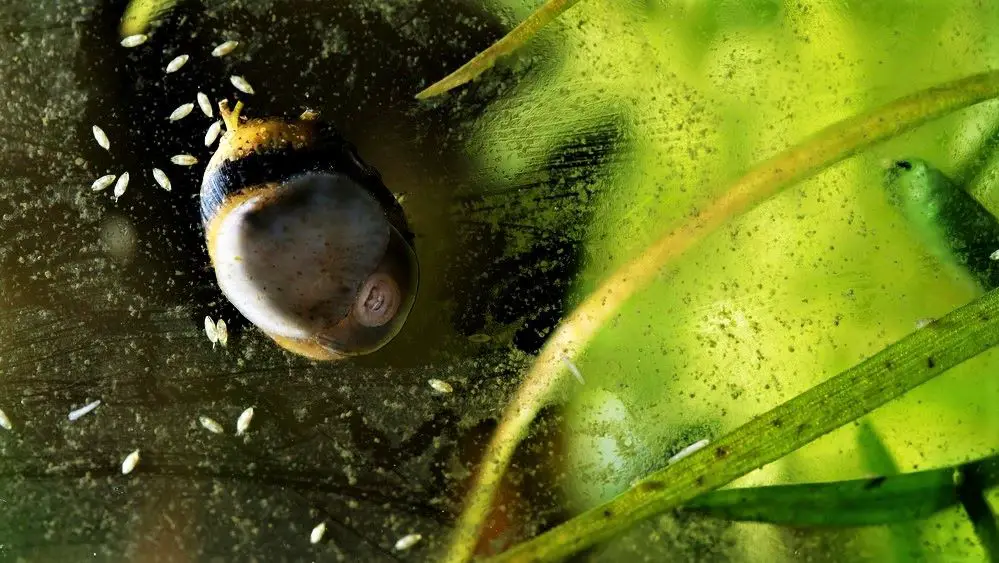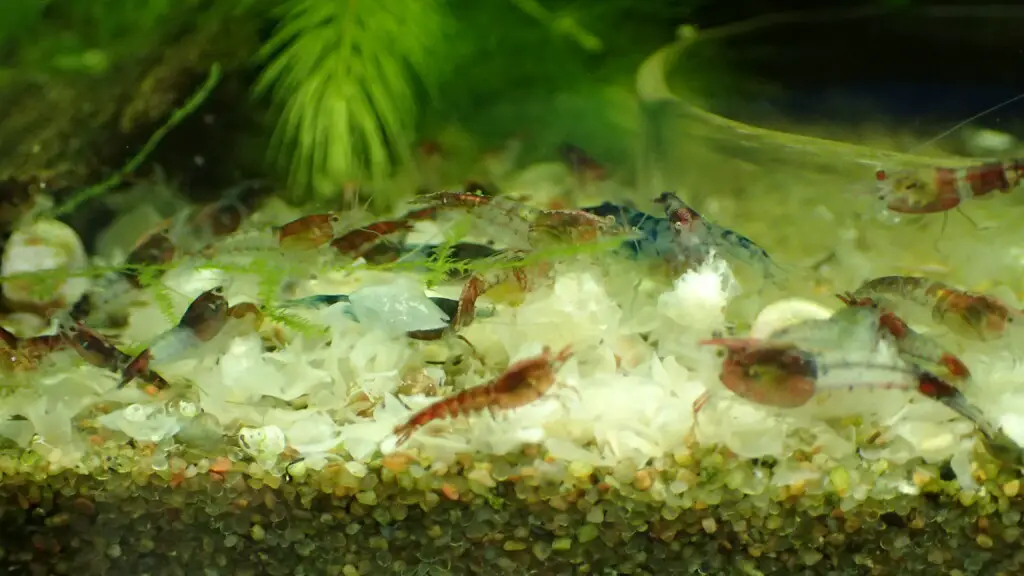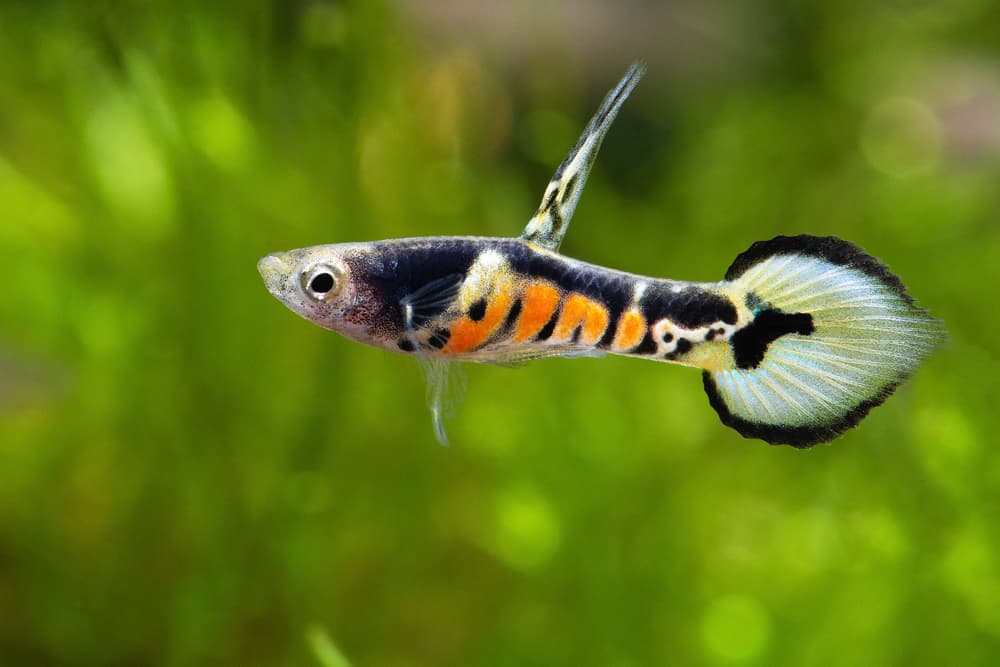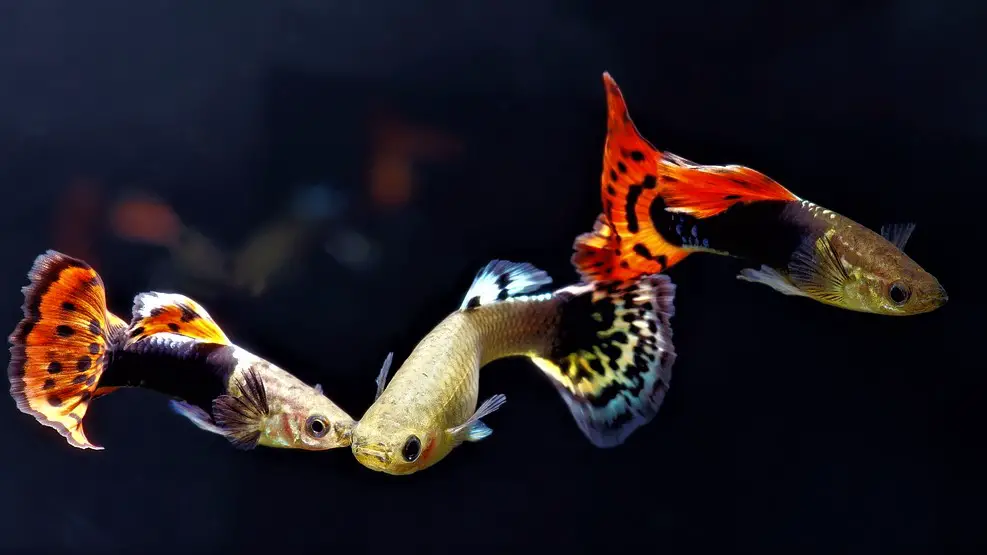Despite their tiny size, seed shrimp can become a significant concern when they swarm your aquarium. These little critters are not harmful to your tank’s ecosystem, but their sudden population explosion can be quite an eyesore.
Hi, I’m your shrimp-keeping companion! Over the years, I’ve discovered that keeping these fascinating creatures is more of an art than science. One issue that often arises in this vibrant underwater world is seed shrimp. They can seem daunting, but rest assured, we’ve got this!
Seed Shrimp Behavior
Seed shrimp, also known as Ostracods, are tiny crustaceans that can be found in various aquatic environments, including our home aquariums. They are opportunistic feeders, meaning they will eat just about anything they can find. This includes detritus, algae, and leftover food, making them excellent scavengers that help keep your tank clean.
However, their helpful nature can quickly turn into a nuisance when their population gets out of control. This usually happens when there’s an abundance of food and favorable conditions, leading to what we call a “seed shrimp outbreak”. They reproduce rapidly, and before you know it, your tank is swarming with these tiny creatures.
One interesting aspect of seed shrimp behavior is their resilience. They are hardy creatures that can survive in a wide range of water conditions. This adaptability makes them a persistent problem once they’ve established themselves in your tank.
Understanding their behavior is the first step towards managing a seed shrimp problem. By knowing what conditions lead to an outbreak, you can take steps to prevent their population from exploding. This might involve adjusting your feeding habits, changing water conditions, or introducing natural predators into your tank.

The Impact of Temperature on Seed Shrimp Population
Temperature plays a pivotal role in the life cycle of seed shrimp. These tiny crustaceans are ectothermic, which means their body temperature and metabolic rate are influenced by the temperature of their environment.
When the water temperature in your aquarium rises, it can stimulate seed shrimp to reproduce more rapidly. This is because a warmer environment speeds up their metabolic processes, including digestion and reproduction. As a result, a slight increase in temperature can lead to a sudden boom in the seed shrimp population.
However, it’s important to note that there’s a limit to how much heat seed shrimp can tolerate. Extremely high temperatures can be detrimental to their survival, causing stress and potentially leading to a decline in their population.
So, if you’re dealing with a seed shrimp outbreak, it might be worth checking the temperature of your aquarium. If it’s on the higher end of the scale, reducing it slightly could help slow down the reproduction rate of the seed shrimp. But remember, any changes to the temperature should be done gradually to avoid causing stress to the other inhabitants of your tank.

Overfeeding in Seed Shrimp Outbreak
Overfeeding your aquarium inhabitants can inadvertently lead to a seed shrimp outbreak. This is because seed shrimp are opportunistic feeders that will readily consume any leftover food in your tank.
When there’s an abundance of food, seed shrimp can eat and reproduce more, leading to a rapid increase in their population. The uneaten food also decays and contributes to the buildup of waste and toxins in your aquarium, creating an environment that’s conducive for seed shrimp but potentially harmful to other inhabitants.
Moreover, overfeeding can lead to nutrient imbalances in your tank, which can promote the growth of algae. Seed shrimp feed on algae, so an increase in algae can also contribute to a seed shrimp outbreak.
To prevent overfeeding, it’s important to feed your fish only what they can consume in a few minutes and to remove any uneaten food promptly. You might also want to consider feeding your fish smaller amounts of food more frequently throughout the day, rather than giving them a large amount of food at once. This can help ensure that all the food is eaten and reduce the chances of leftovers that could feed a seed shrimp population.

Natural Predators of Seed Shrimp
Introducing natural predators into your aquarium can be an effective way to control a seed shrimp population. However, this approach requires careful consideration, as you’ll want to ensure that the predator species is compatible with the other inhabitants of your tank.
Certain species of fish are known to feed on seed shrimp. For example, dwarf puffers and bumblebee gobies have been reported to eat seed shrimp. These fish have small mouths that allow them to pick off the tiny seed shrimp. However, they can also be semi-aggressive and might pose a threat to other small, peaceful fish or shrimp in your tank.
However, it’s important to remember that introducing predators into your tank is not a guaranteed solution to a seed shrimp problem. Some predators might not eat enough seed shrimp to make a significant difference, while others might disrupt the balance of your aquarium ecosystem. Therefore, this strategy should be used in conjunction with other methods, such as adjusting feeding habits and maintaining good water quality.

Manual Removal of Seed Shrimp
Manual removal can effectively reduce a seed shrimp population, especially when their numbers have reached a level that’s causing concern. This method involves physically removing the seed shrimp from your aquarium, usually with the help of a fine mesh net or a turkey baster.
The process is simple but can be time-consuming, especially if your tank is heavily infested. You’ll need to carefully sweep the net or use the turkey baster to suck up the seed shrimp from the water, taking care not to disturb your other aquatic pets or the tank setup.
It’s important to note that manual removal won’t eliminate all the seed shrimp from your tank, as these tiny creatures can hide in the substrate and other hard-to-reach areas. However, it can significantly reduce their numbers and help bring the situation under control.
Remember, manual removal is just a part of the solution. To prevent future outbreaks, you’ll also need to address the underlying issues that led to the seed shrimp explosion in the first place, such as overfeeding or poor water quality.
to the seed shrimp explosion in the first place, such as overfeeding or poor water quality.
The Long-term Solution to Seed Shrimp Problem
While immediate measures like manual removal and introducing predators can help control a seed shrimp outbreak, maintaining a balanced and healthy aquarium ecosystem is the long-term solution.
Firstly, it’s crucial to manage your feeding habits. Overfeeding leads to leftover food, which seed shrimp thrive on. Feed your fish only what they can consume in a few minutes, and remove any uneaten food promptly. This prevents seed shrimp from feasting on the leftovers and helps maintain water quality by reducing the amount of decaying organic matter in the tank.
Secondly, regular maintenance of your aquarium is key. This includes routine water changes and ensuring the filtration system is working efficiently. Good water quality can discourage the rapid multiplication of seed shrimp.
Lastly, consider the conditions in your tank. Seed shrimp often thrive in stagnant water, so ensuring good water circulation can help. Also, a sudden increase in temperature can stimulate seed shrimp breeding. Therefore, keeping the temperature stable and within the appropriate range for your fish can help control seed shrimp populations.
Every aquarium is unique, and what works for one might not work for another. It’s all about finding the right balance and creating an environment where all inhabitants can thrive without one species taking over.

My Top Tip on Seed Shrimp: Introducing Small Guppies
A useful tip for managing a seed shrimp population is to introduce a couple of small guppies into your tank for a few weeks. Guppies are known to be voracious eaters and can help control the seed shrimp population by feeding on them.
However, it’s important to monitor the size of the guppies closely. Once they grow larger, they may start to view baby shrimp as potential prey and could pose a threat to their survival. Therefore, it’s crucial to remove the guppies from the tank before they reach a size where they can harm the baby shrimp.
By using this method, you can take advantage of the guppies’ appetite for seed shrimp while ensuring the safety of your baby shrimp. Remember to observe the dynamics in your tank and make adjustments accordingly to maintain a harmonious aquatic environment.
Conclusion
Dealing with a seed shrimp outbreak can be challenging, but with the right strategies, it’s entirely manageable. Understanding their behavior, controlling feeding habits, maintaining good water quality, and introducing natural predators can all help keep their population in check. Remember, the key to a healthy aquarium is balance. If you need any help managing your seed shrimp situation, please don’t hesitate to contact me.
Happy Shrimp Keeping!
FAQ: How to Deal with Seed Shrimp?
Q. Are seed shrimp harmful to my aquarium? A. No, seed shrimp are not harmful to your aquarium. They are actually beneficial as they feed on detritus and algae, helping to keep your tank clean. However, a sudden population explosion can be an eyesore and indicate underlying issues in your tank, such as overfeeding or poor water quality.
Q. Can I prevent seed shrimp from entering my aquarium? A. It’s challenging to completely prevent seed shrimp from entering your aquarium as they can hitch a ride on plants or other items you introduce into your tank. However, maintaining a healthy and balanced aquarium can help prevent a seed shrimp outbreak.
Q. Will changing the water in my aquarium get rid of seed shrimp? A. While regular water changes are an important part of aquarium maintenance, they won’t necessarily get rid of seed shrimp. These tiny creatures can hide in the substrate and other hard-to-reach areas. However, maintaining good water quality can discourage the rapid multiplication of seed shrimp.
Q. Can I use chemicals to eliminate seed shrimp? A. While there are chemicals available that can kill seed shrimp, they are generally not recommended as they can also harm other inhabitants of your tank. The best approach to managing a seed shrimp problem is to address the underlying issues that led to the outbreak, such as overfeeding or poor water quality.
Q. Can seed shrimp be used as food for other fish? A. Yes, some fish species, such as dwarf puffers and bumblebee gobies, are known to eat seed shrimp. However, introducing these fish into your tank should be done with caution to ensure they are compatible with your other aquatic pets.
